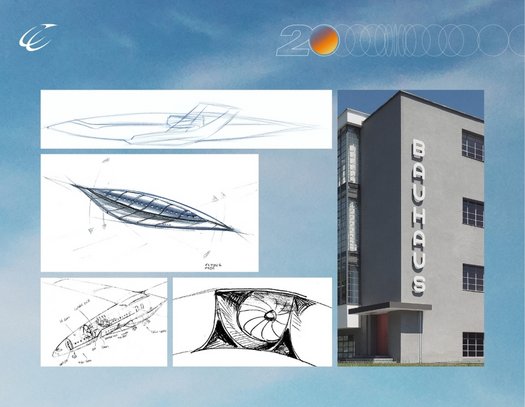
2005Mission future aviation
Visionary aircraft studies, radically new propulsion technologies, and alternative transport concepts: in November 2005, the aerospace companies Airbus (then EADS), Liebherr Aerospace, and MTU Aero Engines, together with the Free State of Bavaria, founded Bauhaus Luftfahrt to point the way to the future of aviation. The name is inspired by the creative and interdisciplinary approach of the historic Bauhaus School of Design.
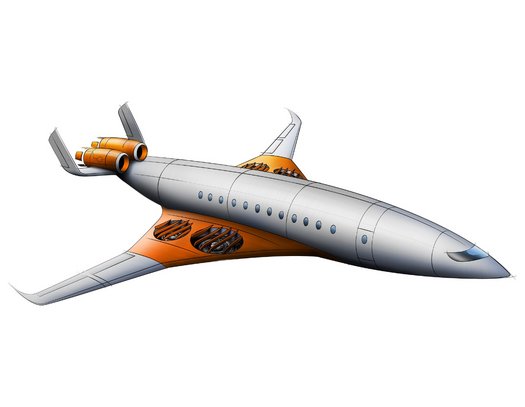
2007HyLiner ESTOL: extreme short take-offs and landings
The growth of air transport is increasingly bound by the capacity limits of major hub airports. Building new airports or expanding existing runway capacity is difficult – especially in Europe. Bauhaus Luftfahrt recognized this at an early stage and comprehensively investigated which aircraft and operating concepts could be used to increase passenger capacity even with particularly low infrastructure requirements.
The result: the HyLiner ESTOL (Extreme Short Take-Off and Landing). This aircraft concept platform requires a field length of only 1,000 meters, for a payload of up to 100 passengers and a range of 1,000 nautical miles. In this way, multi-slot runways or even dedicated taxiways can be used for take-offs and landings.
The technology platform for the study of propulsive wing systems enables both high-lift at low speed and efficiency in high-speed cruise. The investigation included a number of powered lift configurations, such as fan-in-wing configurations, cross-flow fans integrated at the wing's trailing edge, as well as externally and internally blown flap systems. In addition to mechanical and pneumatic drive options for the powered high-lift systems, also turbo-electric transmission was also already conceived at the time.
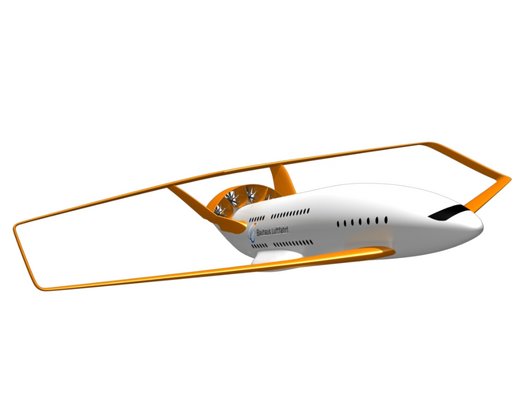
2008People mover for short distances: the Claire Liner
From the outset, Bauhaus Luftfahrt's propulsion research has been committed to revolutionary design approaches. One of these is the distribution of thrust to increase propulsion efficiency and the greater integration of propulsion and airframe in a common aircraft concept, thereby exploiting all opportunities for efficiency gains.
The Claire Liner concept study from 2008 brings together a wide range of ideas. In view of increasing urbanization, it presents a “people mover” that transports large numbers of passengers over short distances.
The most important features of the Claire Liner are a mechanically distributed propulsion system in the rear fuselage, a multifan (powered by core engines embedded in the fuselage for boundary layer ingestion) and a new wing and fuselage configuration that, together with the innovative split-level arrangement in the cabin, ensures maximum passenger capacity.
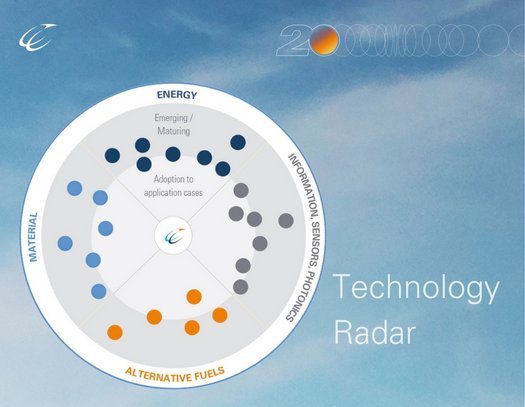
2008The future on the radar
The Technology Radar identifies research breakthroughs in a broad range of technologies at an early stage and assesses their long-term potential in aviation to support the development of well-founded overall concepts.
Future demands were anticipated, in particular integrating performance optimization with sustainability goals like the transition to renewable resources and climate neutrality and aligning these needs with emerging technologies.
Early identified as forward-looking were, for example, bio-based composites for lightweight aircraft structures, fuel cells as a key for zero-emission propulsion, liquid hydrogen as an energy carrier and cooling medium for superconductors in electric engines, and cyber-physical systems as enablers of efficiency, resilience and safety in the face of increasing system complexity.
Learn more
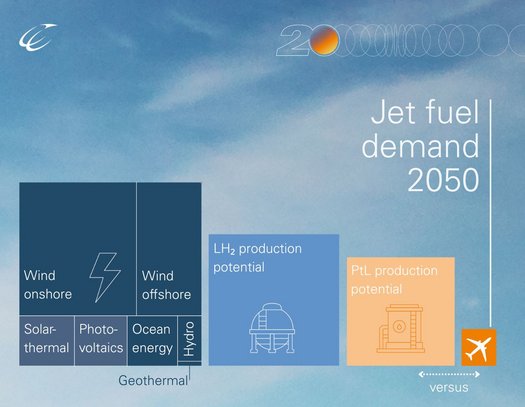
2009Roadmap for sustainable fuels
Bauhaus Luftfahrt evaluates sustainable fuel alternatives and integrates them into a roadmap. The first milestone in this process is the development of a weighted decision matrix for sustainable fuel alternatives, which considers the entire life cycle from a technical, economic, and ecological perspective.
The project was part of the European Commission's “Sustainable Way for Alternative Fuels and Energy for Aviation” (SWAFEA) study, which involved representatives from all areas of the aviation sector, including airlines, aircraft manufacturers, research institutions, and universities.
Crude oil-based biofuels cannot be produced sustainably on the scale required. Advanced biofuels and solar and electricity-based fuels will be needed to meet a large part of future energy demand. In addition to synthetic kerosene, which is compatible with the current fleet, the direct use of liquefied hydrogen offers an important long-term prospect.
Learn more

2011Networks for knowledge and change
Bauhaus Luftfahrt, together with the Technical University of Munich and the University of the Federal Armed Forces, founds Munich Aerospace e.V. to promote cooperation in research, scholarships, and teaching. The German Aerospace Center also becomes a member.
In addition, the new Aviation Initiatve for renewable energy in Germany – aireg is strengthening the network. This initiative aims to harmonize international sustainability standards, conduct life cycle analyses, and develop biofuel supply scenarios. Its co-founders include Airbus, Lufthansa, and 17 other partners from industry and research.
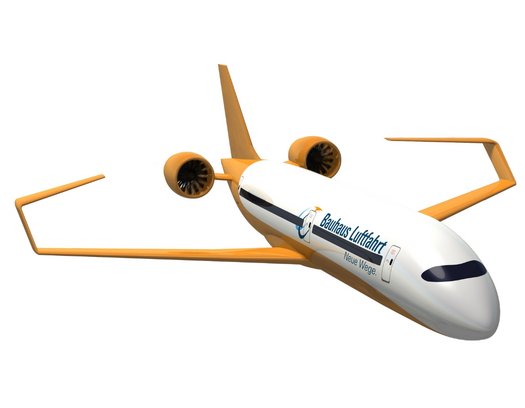
2011Ce-Liner – emission-free electric flying
The mission: We are developing an electric aircraft concept that is emission-free in operation for use after 2035.
The approach: All teams are working together in an interdisciplinary group design project.
The result: In 2012, Bauhaus Luftfahrt presents the Ce-Liner at the ILA and attracts a great deal of attention.
The highlights of the concept: a fully electric system architecture, electrically powered fans, state-of-the-art battery technology, and a novel C-wing configuration.
Key findings: Even with significant technological advances, the limited specific energy density of batteries compared to conventional kerosene will only allow for very limited emission-free ranges and will therefore not be able to serve the majority of commercial aviation. Battery-supported hybrid powertrains cannot fundamentally change this situation either.
However, battery-electric powertrains are well suited as an energy source for smaller aircraft with limited range requirements and can enable zero-emission flying in the niche market of regional air mobility.
Learn more

2011Solar fuels
Bauhaus Luftfahrt identifies solar fuels as a high-potential topic at an early stage. From 2011, Bauhaus Luftfahrt coordinates the SOLAR-JET project, a European research alliance of renowned research institutions to demonstrate the technical feasibility and provide evidence of its future potential. In 2014, the thermochemical production of ‘’solar‘’ kerosene is successfully demonstrated at laboratory scale.
Today, the SUN-to-LIQUID II project is building on the successes of previous projects and aims to demonstrate the conversion of concentrated sunlight, water and CO2 into fuel in a highl efficient reactor concept on a 50-kW scale. Detailed system analyses will also examine a model of future commercial solar plants at multi-megawatt scale to assess life cycle emissions, costs and commercial viability.
Significant progress and clear recommendations for action are expected to realise the potential for cost-effective and large greenhouse gas emission reductions, particularly in aviation, with a production potential that is technically scalable beyond projected future demand.
Learn more

2012Hybrid concepts
Electric propulsion and power are a key enabler for new market segments at the low end of the payload-range spectrum. Heat engines, however, will remain the backbone for propulsion and power in classic air transportation. To enable a strong impact on aviation’s sustainability, the electrification of aircraft motive power requires a synergistic systems design integration with advanced gas turbine technology.
From early on, Bauhaus Luftfahrt researcher's have been looking into a broad spectrum of eligible architectures for hybrid-electric propulsion systems. These range from turbo- and serial electric options to cycle- and mechanically-integrated power plant systems with electric power supply either from battery storage or hydrogen fuel cells.
Learn more
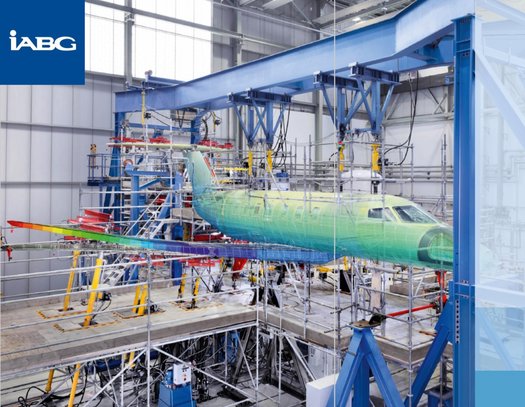
2012Robust setup
IABG Industrieanlagen-Betriebsgesellschaft, based in Ottobrunn, becomes a funding partner. The high-tech service company offers consulting and technical-scientific services for the use of safety-relevant systems and technologies.
In addition, the Free State of Bavaria provides institutional funding to secure research work in the long term.
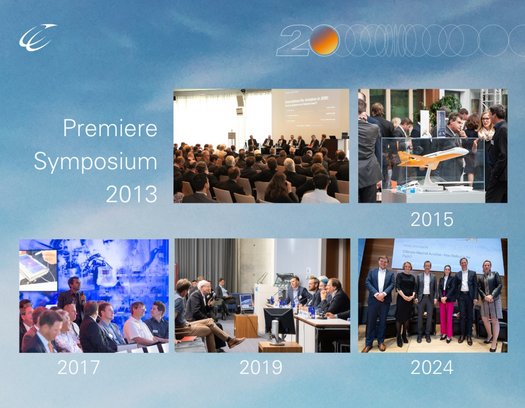
2013Bridge between science and industry
With its first symposium in 2013, Bauhaus Luftfahrt established a valuable forum for exchange between industry and science. Here, key current developments are identified and discussed. Since the first event, around 200 international participants from the aviation community have gathered here every two years.
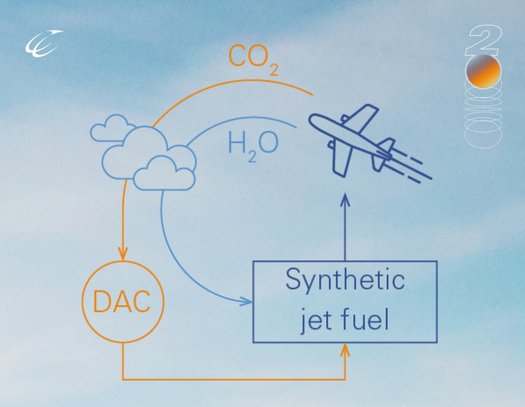
2013CO₂ taken from the air
Bauhaus Luftfahrt has been investigating technologies for the direct extraction of carbon dioxide from the ambient air at a very early stage. Direct air capture (DAC) enables a carbon supply that is not tied to the location and is freely scalable, and thus allows for the production of comprehensive quantities of synthetic fuels like Power- and Sunlight-to-Liquids. Replacing fossil kerosene with these sustainable fuels represents a central approach towards climate-neutral aviation.
Learn more
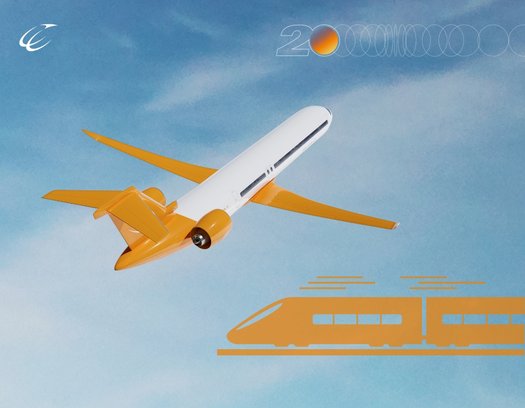
2013Multimodal from A to B
The integrated mobility of air and rail offers great potential for a more sustainable aviation system. High-speed trains could be an attractive alternative to 2 to 3% of short-haul air traffic. This shift would help to reduce delays and lower emissions.
But how can a smooth passenger experience be designed? What strategies can European hub airports adopt in response to growing global traffic volumes, capacity bottlenecks, and evolving passenger expectations?
For example, the EU project MultiModX is currently developing a tool that aims to improve the coordination of rail and air schedules through iterative path assignment. This approach considers passenger flows, infrastructure capacity, and responsiveness to delays and disruptions, aiming to reduce travel times and overall costs.
Learn more
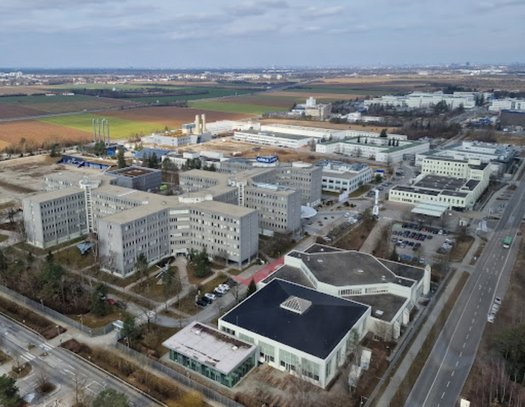
2015Ludwig Bölkow Campus becomes new home
Bauhaus Luftfahrt is moving from Schwabing to the Ludwig Bölkow Campus in Taufkirchen near Munich. This is where industry and science, primarily from the fields of aviation and public safety, come together. Among others, Airbus, IABG, Munich Aerospace, TUM facilities, and the University of the Federal Armed Forces are located here.
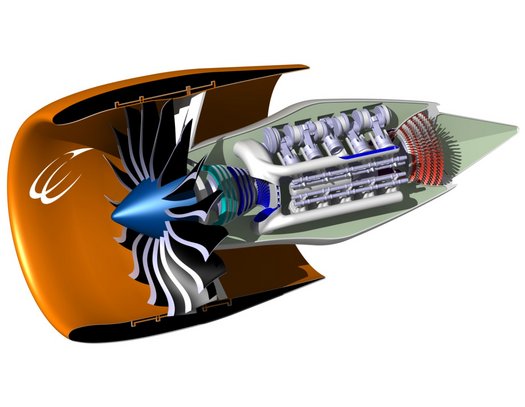
2015Ultra-efficient Composite Cycle Engine
The Composite Cycle Engine (CCE) concept incorporates piston engine technology into the core of an aircraft turbo engine. While the gas turbine based low-pressure system delivers the useful work, the piston system acts as an ultra-efficient gas generator. Here, the non-stationary, partially isochoric combustion of the highly charged piston engine enables higher peak pressures and temperatures in the core, and thereby unlocks significant gains in power plant thermal efficiency.
Supported by the EU projects LEMCOTEC and ULTIMATE, Bauhaus Luftfahrt has studied a number CCE designs ranging from regional to long range aircraft applications. The obtained results indicate consistent double-digit mission fuel burn improvement relative to advanced turbofan engines.
A key intrinsic challenge of the concept is the reduction of NOx emissions. Promising measures include compression intercooling, advanced combustion technology and water / steam injection in the piston engine. A particularly performant CCE variant featuring a system of free double piston devices in the core engine is currently investigated in the EU-projects MINIMAL and EXAELIA.
Learn more
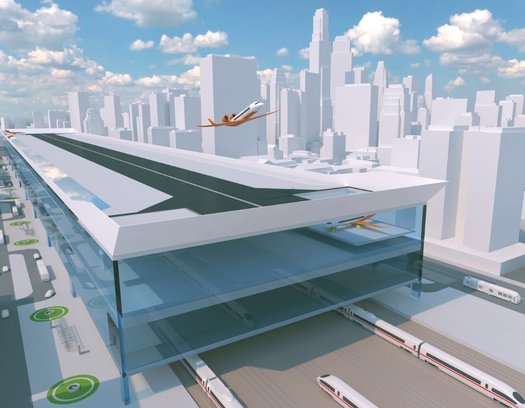
2016Air mobility in urban areas
CentAirStation and CityBird are causing a stir far beyond the aviation industry. The project mission: An inner-city airport and a suitable aircraft to complement traditional regional airports. The aim is to significantly increase air traffic capacity in the face of increasing urbanization. At the same time, travel times between cities are to be shortened and rail transport integrated optimally within cities. The approach: Twelve students from the Glasgow School of Art and 25 scientists from Bauhaus Luftfahrt are working together on an interdisciplinary project.
The result: a multimodal transport hub based on existing rail tracks, with a 640-meter runway above it. Airport operations are arranged vertically, along with an aircraft for inner-city airport operations (featuring noise-minimizing engine placement at the rear and a simple but effective high-lift system along the entire wingspan). Potential: Around 100 major cities worldwide have suitable sites and could thus offer additional passenger capacity while reducing travel times.
Learn more
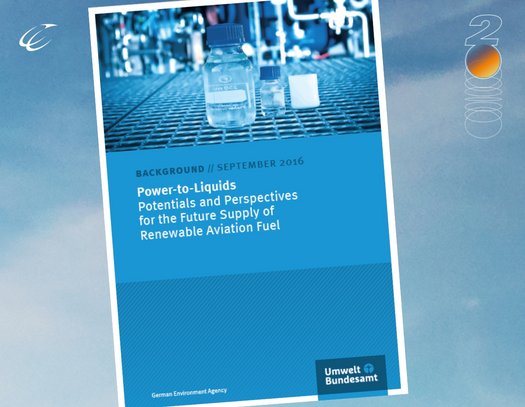
2016Power-to-Liquids
Declining cost for electricity generation from solar and wind energy are moving the production of synthetic fuels from water, CO2 and renewable electricity within reach. Bauhaus Luftfahrt conducts a study on the Potentials and Perspectives for the Future Supply of Renewable Aviation Fuels via Power-to-Liquids, on behalf of the German Environment Agancy and in collaboration with Ludwig-Bölkow Systemtechnik. Meanwhile, Power-to-Liquid fuels are a cornerstone of almost every scenario that aims at achieving carbon neutral aviation over the next decades.
Learn more
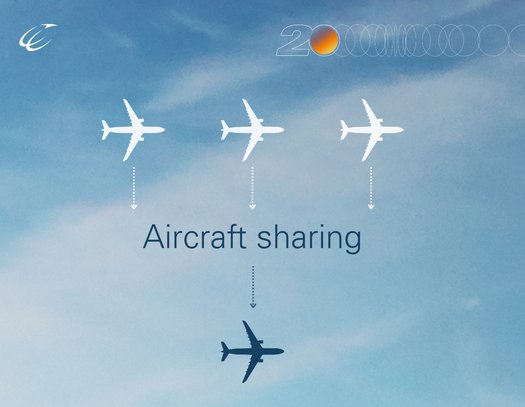
2017Aircraft sharing for efficient networks
Operating concepts such as aircraft sharing and new network structures are coming to the fore. They can significantly reduce climate impact, current research estimates a reduction of more than ten percent. Bundled passenger flows and shared use of aircraft across airlines reduces operational inefficiencies and lowers per-flight emissions. Rethinking air transport networks has great transformative potential.
Learn more

2018Potential of urban & advanced air mobility
Limiting factors for the market potential of urban air mobility for passengers include the limited range of fully electric, vertical take-off aircraft, significantly higher transport costs compared to existing alternative modes of transport, and finally the limited availability of vertiports with the necessary take-off and landing capacity. Urban air mobility will remain a niche market.
Learn more: Whitepaper Urban Air Mobility
Climate-friendly opportunities and added value for a wider range of users arise primarily from advanced air mobility in regional air traffic. Here, more conventional aircraft configurations combined with electric propulsion systems are to be expected, working in synergy with existing transport systems. The potential of (hybrid) electric flying lies in short distances between cities or in connecting rural regions with limited transport infrastructure.
Learn more: Whitepaper Regional Air Mobility
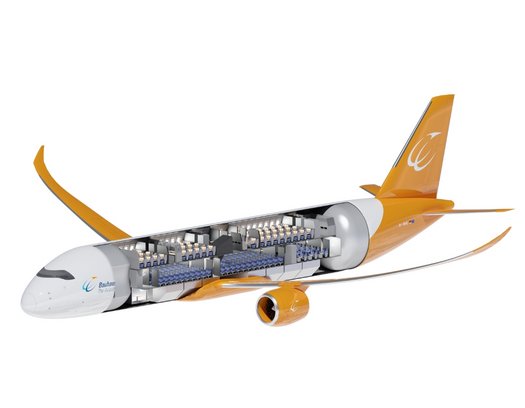
2019Rethinking the future of long-haul flights
... and thus the original aviation segment. That is the mission of another interdisciplinary design project within Bauhaus Luftfahrt. Hy-ShAir aims to take a holistic approach to significantly reducing emissions in air traffic.
The team is analyzing operational structures, sustainable energy sources, and the impact on aircraft and cabin design. The result is strongly influenced by operational changes and the choice of energy source.
The key data: a reduced flight speed of Mach 0.7 enables significant energy savings, while a capacity of 400 passengers keeps productivity at a level comparable to the current long-haul fleet. Flights planned at the same time are combined, which improves capacity utilization. The expansion of direct connections helps to keep the total travel time for passengers from increasing while avoiding additional flights with transfers.
On this basis, liquid hydrogen has been selected as the energy source for the Hyliner aircraft concept. This is used in gas turbines and stored in fuselage tanks. The wing without tanks and the low Mach number enable the use of new technologies, such as a laminar wing profile or active load control on a wing with a very high aspect ratio.
Learn more
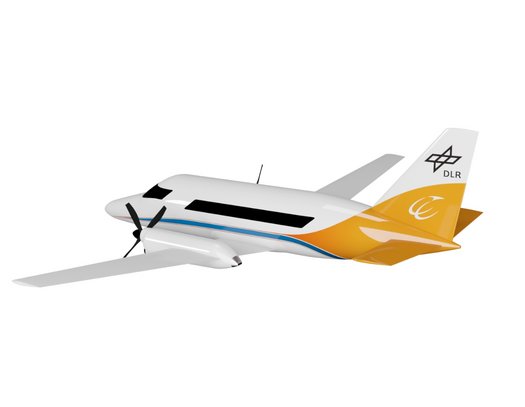
2020DLR comes on board
The German Aerospace Center (DLR) becomes a funding partner and strengthens the national networking of research activities. In the CoCoRe (Cooperation for Commuter Research) project, both partners are jointly investigating the possibilities and potential of a hybrid electric aircraft with 19 seats.
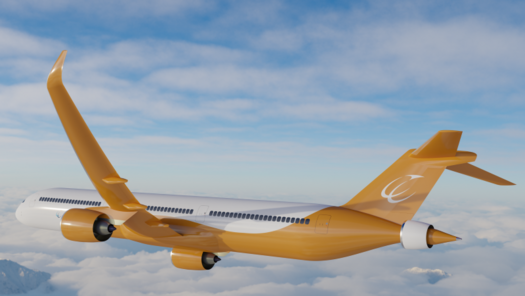
2020CENTRELINE: Proof of Propulsive Fuselage Concept
The ingestion and re-energisation of the fuselage boundary layer flow by the propulsion system, so-called fuselage wake-filling propulsion integration, is a yet untapped source of further efficiency improvements in transport aviation. The positive effects has long been known from marine propulsion. Ship propellers are typically located at the aft-body of the vessel and operated within the boundary layer flow close to the body surface. Bauhaus Luftfahrt's Propulsive Fuselage Concept (PFC) aims at maximising the associated benefits also for the propulsion of large transport aircraft.
Therefore, specially designed fan encircles the aft-fuselage section and produces thrust by ingesting and re-energising the airflow in the fuselage boundary layer. The fuselage fan can be driven by a dedicated gas turbine engine (see also EU project DisPURSAL) or by an electric motor.
The PFC configuration features excellent compatibility with other advanced wing and propulsion technologies including the application of hydrogen as a fuel. As part of the EU CENTRELINE project, the PFC technology was experimentally validated a decade after the initial research activities, bringing it one step closer to potential future industrial application.
Read more
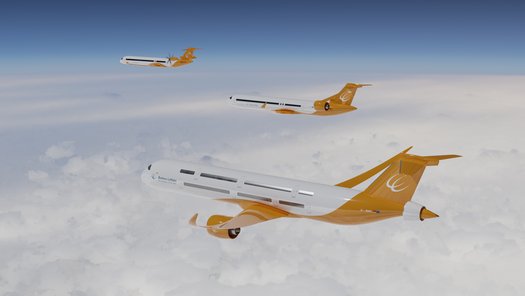
2020Hydrogen-based future
One of the biggest challenges for climate-friendly aviation is to completely replace fossil kerosene and bring alternative fuels into the market in an economically viable way. Hydrogen is of particular interest here, as it plays a key role in the production of synthetic, kerosene-like fuels and also promises great potential as a CO2-neutral aviation fuel in its pure form, for example as liquid hydrogen (LH2).
Bauhaus Luftfahrt is therefore intensively investigating the possibilities, prerequisites and possible limits of hydrogen to radically revolutionise the entire aviation industry in the long term. Realistic scenarios for meeting the demand for hydrogen in aviation are being analysed, taking into account cross-sector couplings. Suitable transition paths from a kerosene-based to a long-term hydrogen-based future of aviation will be explored and concept solutions for the optimal utilisation of the special properties of hydrogen in highly efficient, climate-friendly aircraft will be developed.
Learn more
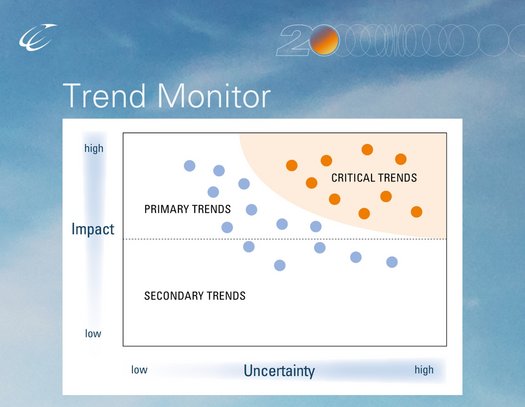
2020Trend Monitor
From green hydrogen to metaverse and societal polarization: The Bauhaus Luftfahrt Trend Monitor captures emerging social, technological, economic, environmental, and political (STEEP) trends, and evaluates their strategic consequences for the aviation industry. Most recently, proprietary AI agents were integrated into the methodology to develop scenarios for aviation in 2035 in combination with expert input.
Learn more

2023Paths to sustainable transformation
The sustainable transformation of the aviation industry and the development of new business areas are the goals of scenario-based methods. Bauhaus Luftfahrt is consistently developing its strong expertise in this area. In 2023, three cornerstone scenarios were developed for the market introduction of sustainable fuels, including radically efficient aircraft combined with SAF, and hydrogen-powered aircraft.
Further scenarios, developed in collaboration with partners such as the Technical University of Munich, Airbus, and Munich Airport, examine key drivers of aviation such as digitalization and an aging population. Plausible visions of the future help the industry to transform itself in a sustainable, innovative, and robust manner.
Learn more
